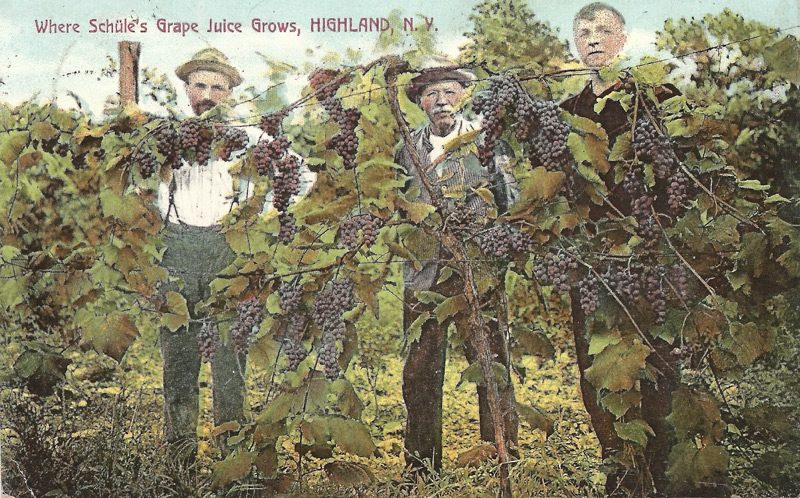
Schüle’s Grape Juice company was on the west side Vineyard Avenue just south of the hamlet of Highland. The company was one of the main purchasers of grapes from local farms, including the Yess farm in the story below. Today the large Schüle buildings are used by several businesses for storage and shipping. Vintage postcard image circa 1910 from the collection of Vivian Yess Wadlin.
The Deep Family Roots of an Old Vineyard
Fall 2017
Fall is a great time to discover Ulster County wineries, and we have plenty: Adair Vineyards, Baldwin Vineyards, Benmarl Winery, Brimstone Hill Vineyard & Winery, Cereghino Smith Winery, El Paso Winery, Enlightenment Winery, Glorie Farm Winery, Kedem Winery, Magnanini Farm Winery, Maple Hill Winery, Robibero Family Vineyards, Stoutridge Vineyards, and Whitecliff Vineyard (see Whitecliff listing). This list doesn’t include all the “hobby” vineyards scattered throughout the county, nor any of the vineyards long fallow and forgotten. There was a time when many subsistance farmers had their own grape arbors and vineyards. This is the story of the life and death of one family’s vineyard.

The Yess family, around 1910, unknown location
Alois Joseph Jesch’s name was Americanized to Louis Joseph Yess when he came here from Austria. After a few years, a marriage, and three surviving children, he and his wife, Maryia Zidar (Photo below), bought a farm in Ulster County and planted a vineyard.
Among family members the property is always referred to as “our grandparent’s farm.” But it was “our grandfather’s vineyard.” It started one spring day as he was traveling on Plutarch Road in the Town of New Paltz. He came across a neighbor pruning grapes. The farmer gave our grandfather some of the cuttings and his vineyard was born.
Eventually, the vineyard had 88 rows of grapes, each about 120’ long, the vines growing on wire strung tautly between locust posts. The locust tree that provided the posts was felled by our grandparents using a two-man saw. The tree was so large, according to our father, the late Louis J. Yess, Jr., the saw had barely six inches of play on each side. After they felled the tree, they cut its girth several more times to post lengths. Our grandfather then split the logs length-wise into the posts using steel and wooden wedges and sledge hammer. It all came together in the vineyard where he grew grapes that supplied cash which helped his family through the depression, and the homemade wine which helped our grandfather survive prohibition. We remember empty barrels in the basement, and making “skis” out of the staves.

Vines at Whitecliff Winery, Gardiner

Locust post and Louis R. Yess
Alois J. died in his vineyard in 1942. That was just twenty years after acquiring the property on which he and his family lived and farmed. No one tended the vineyard after his death. His two sons Louis and Michael did harvest grapes there for the next several years. They hauled the grapes to the Schüle’s Vineyard Avenue grape juice plant in Highland, and pocketed the proceeds. The vineyard continued to provide.
Eventually, without care, the vines were less and less productive, and over the next 30 years the only sign of all our grandparents’ work was the post rows. The land was cleared for the home of Louis R. in the mid 1960s. Almost all the posts were removed–some used elsewhere. Two marked our driveway entrance.
This past summer, we visited the few remaining locust posts, some with rusted wire clinging stubbornly to them. The posts remain upright and are now in woods uncut since 1942. The photo above shows one of the posts with Louis R. standing next to it.
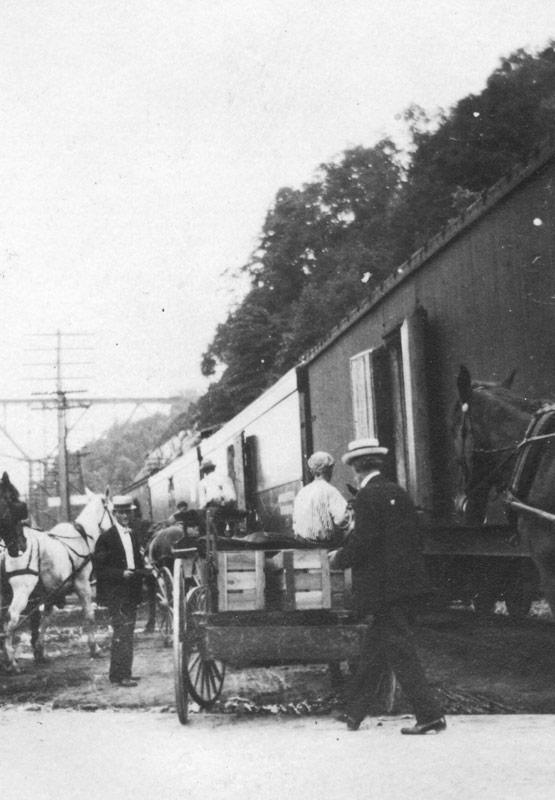
Shipping grapes to NYC by train, Highland
In addition to preparing the land, cutting and setting the posts for the wire, our grandfather grafted his own grapes–and often those of his neighbors. We don’t know if it was skill he learned in Austria before immigrating here. He also enjoyed grafting apple trees so a single tree might produce as many as five varieties of apples. The last tree to do this on his farm died in the early 1980s.
In his vineyard, he would graft onto American native grape rootstock which had evolved to survive colder temperatures and didn’t suffer from some of the European grapevine rootstock problems. It is and was a common practice to use native American rootstock grafted with more flavorful wine grape varieties to produce the more palatable wines. Grafting was used primarily to overcome the blight of phylloxera. Also, native American vines developed differently–the farther north you went the more cold-hardy the plant. A desirable trait in New York State.
The Yess vineyard was at the north end of their homestead bordering on the land of what became in the 1930s a nudist colony–the Fresh Air Club. There are photos of that nudist colony in a book titled “On Going Naked.” The boys of the neighborhood however had only to volunteer to plow the dirt between the rows of grapes to glimpse and gape at this new and unusual species working and frolicking in the buff next door.

Fresh Air Club was a nudist colony at the intersection of Swartekill and Plutarch roads in Esopus, just north of the Yess vineyard. This image is from the book “On Going Naked” by Jan Gay (1932. Although the books contains many photos from the Fresh Air Club, none of the text pertains to the colony. There are two versions of the book, one does not contain Fresh Air Club photos.
The Fresh Air property and the Yess farm were once owned by the David Auchmoody family, but like many large farms the property was subdivided into smaller farms, sometimes to accommodate a growing family and more often to get through hard times.
The Yess home, pictured below, in 1921 (with Louis J. Sr., Maryia, their sons, Michael and Louis, and some friends or boarders), and again in 2017, is actually the Auchmoody’s original dwelling built around 1790 with an addition in 1830.
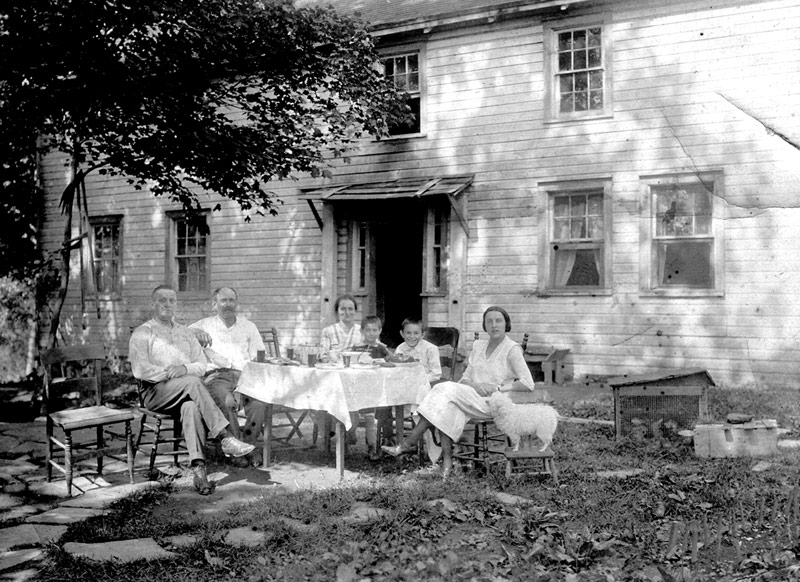
The farm house as it looked when the Yesses purchased it in 1921. Seated second from left is Louis J. Yess, Sr.; Mrs. Maryia Z. Yess; Louis Yess, Jr. and Michael Yess. Others are unknown, possibly boarders.
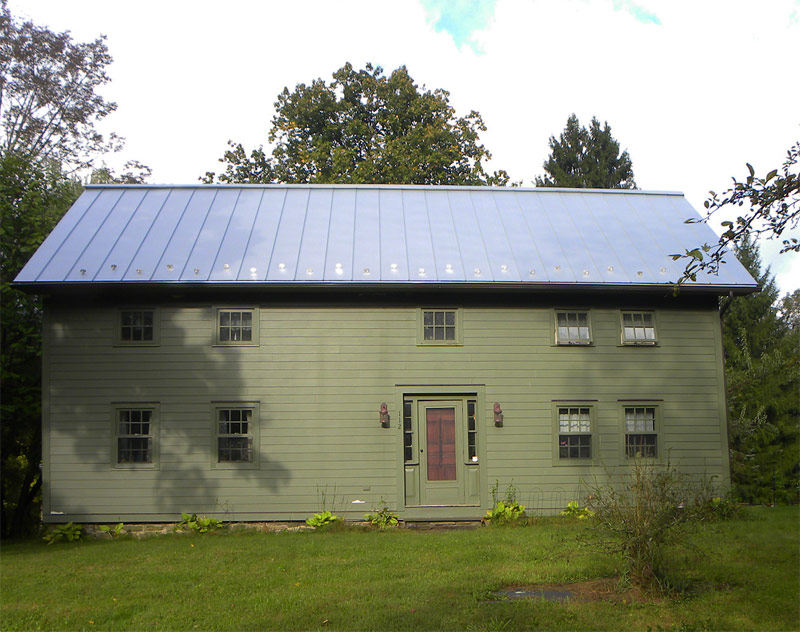
House as it looks in 2017 after a bottom up restoration in 2008. Retains beams and wide board floors of the circa 1790 original house (right half), and woodwork and floor in living room of the circa 1830 addition.
A small cemetery located about 400 yards from the house is the Auchmoody family burial grounds. The Loyd Cemetery on Old New Paltz Road is the final resting place of many more Auchmoodys whose headstones are among the most impressive there. Our family members who had once lived on the farm property and have since passed on–Louis J. Sr., and Maryia; Michael; Dot Whitman Yess, and Louis J. Jr.; and Kimberly Yess Shands, are also buried there.
Today, many members of our family still cling to the original farm’s land. The farmhouse is still in our hands. Other homes built on the property house two great-grandsons’ families with four great-great-grand children. No one farms yet, but we are hopeful.
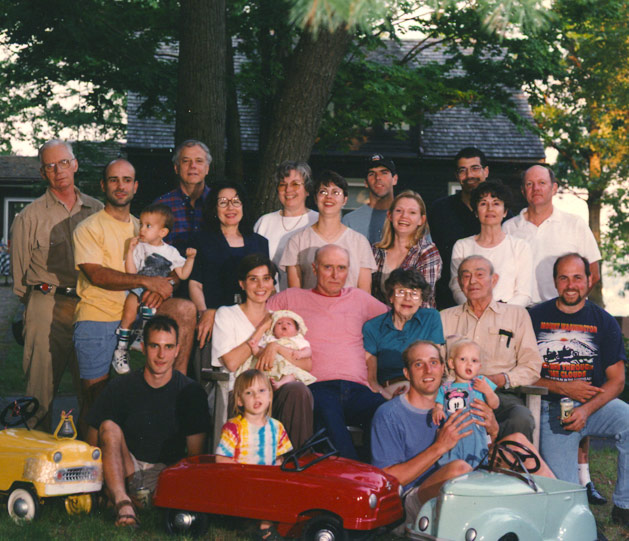
Yess Family Reunion 1995, children and baby are the fifth generation to have lived on the homestead property.
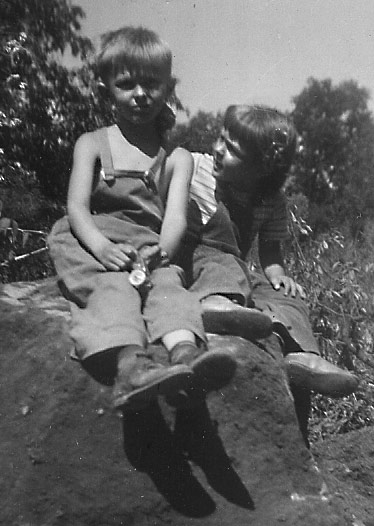
Louis R. and Vivian Yess at the farm in 1948.
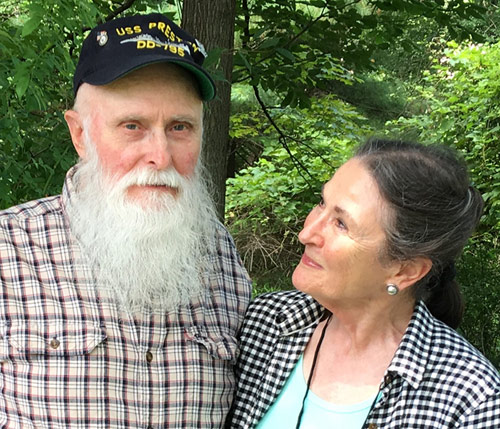
Louis R. and Vivian Yess Wadlin at the farm in 2017, same site as left photo.
The only grapes to be found today grow wildly (and sourly) along the road and in the woods. In Fall vines produce big plump purple grapes–tempting–but only once.
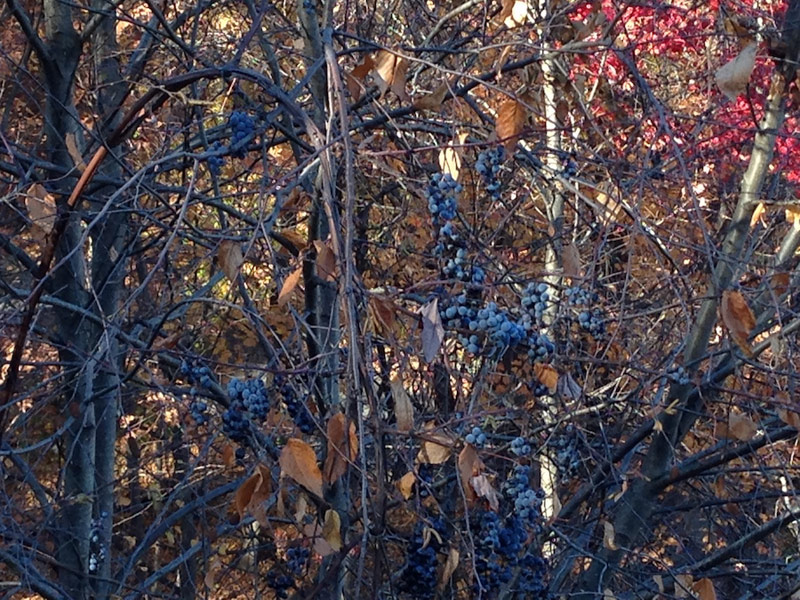
Wild grapes on Swartekill Road, Esopus
Of all the things our grandparents and that farm gave our family over the past 97 years, it is still the vineyard, with its history and memories, that provide us with our deepest roots in beautiful Ulster County. We are forever grateful.
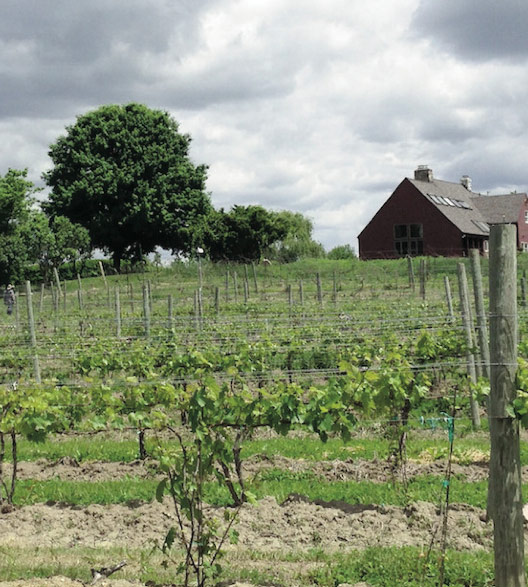
Award-winning Whitecliff Vineyard in Spring. By Fall, the vines are laden with foliage and grapes.
